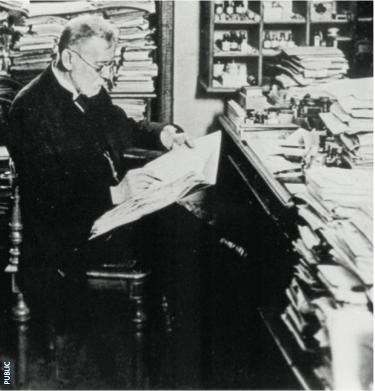SATURDAY, 11 OCTOBER 2014
We live in a colourful world, from the colours on this page right up to our blue and green planet. Their ubiquitous presence makes it easy to forget that colours are one of the most human of concepts. Classification of colours exhibit regional variations between different cultures: Russian has separate words for dark blue (siniy) and light blue (goluboy), while Welsh has only one word to describe shades of blue, green and grey (glas). Defining colours remains subjective even within the same language, with two people describing the same shade differently. We use them to describe our emotions, and they even modify our behaviour, the calming effect of pale blues and greens in hospitals, or how sports teams in red are statistically more likely to win. All these features of colour come from describing the same physical property, that of different wavelengths of light.In 1671, Isaac Newton presented his research on the properties of light to the Royal Society. Prisms generate a rainbow-patterned arrangement of colours when light passes through one of the faces. It was originally thought that it was the prism itself that added these colours. However, Newton’s key finding described how prisms in fact split ‘white’ light into the colour spectrum. Each colour represents a particular wavelength of electromagnetic radiation in the spectrum visible to humans, ranging from the shortest wavelengths at ~400 nanometres (violet), to the longest at ~700 nanometres (red). We perceive colour when an object absorbs some wavelengths of light while reflecting others. Thus, if an object appears red it absorbs all wavelengths of light except red. Within the eye there are different light sensitive cells dispersed on the retina: rods and cones. Rods are active in dim light and are insensitive to colour. Rod cells are deactivated upon exposure to bright light and require time to be restored, which explains the time delay required to regain night vision after turning off a light. Cone cells work better in bright light and are responsible for our colour vision. Most humans have three different types of cone cells sensitive to short, medium and long wavelengths of light, respectively. The changing stimulation that these cells experience from particular wavelengths is interpreted by the brain as different colours.
Though the wavelengths of ‘coloured light’ are fixed, colour perception is not universal. Most humans have trichromatic vision because they have three types of cone cells in their retina. However some people have fewer than this, or no receptor types, which results in colour blindness. The most common colour blindness is red-green, which arises from a shortage of cones sensitive to medium or long wavelengths. People with this condition thus have difficulty distinguishing between red, yellow and green. Similarly, there is a lot of variation in colour vision across the animal kingdom. Marine mammals have only one type of cone cell and thus have monochromatic vision. Contrary to popular belief, dogs, like most land mammals, have two types of cone cells and do not only see in black and white. In this regard, their vision is similar to that of a red-green colour blind person. Many other animals such as birds, reptiles and fish are tetrachromats, having four different colour receptors and can distinguish more colours than humans. The animal with the most is the mantis shrimp, which has twelve types of cone cells and an ability to distinguish four shades of ultraviolet.
Humans have been fascinated with colour from our earliest history. There is evidence of industries formed for the production of single colour dyes dating back over 5000 years. Indigo, for example, represented the British American colonies’ biggest agricultural export alongside rice during the 18th century. Even today, indigo is a dye that is widely used to add the blue colour to jeans. Unlike dyes, which are soluble and fix to the substance being dyed, pigments are insoluble and dry on top of the target substance. Pigments were originally obtained from natural sources such as minerals, plants, and animals, and often at great cost. For example, ultramarine was extracted from lapis lazuli, a deep blue semi-precious stone that was worth more than gold in medieval times.
This reliance on natural pigments changed in 1856 through a serendipitous discovery by an 18-year-old British chemist, William Perkin. Perkin was attempting to synthesise the anti-malarial compound quinine from coal tar; a waste product from the production of coal gas. One day, while washing away a black residue from an apparently failed reaction, he noticed that the ethanol washings had a brilliant purple colour. Curious, he dipped some silk into the solution, which became dyed and remained strongly coloured even after washing. Despite his youth, Perkin immediately saw the potential to produce the world’s first synthetic dye. Perkin patented his ‘Aniline purple’ or ‘Tyrian purple’, named after the notoriously expensive dye extracted from sea snails in ancient times, and set up a factory for mass production.
The initial uptake of Perkin’s synthetic dye was slow, but the colour leapt to fame in 1857 thanks to Empress Eugénie of France. The empresses’ dominance in fashion soon popularised the French name for the colour: mauve, and the dye subsequently became known as ‘mauveine’. A year later Queen Victoria wore a mauve dress to her daughter’s wedding, and suddenly women on both sides of the Channel wanted to wear the colour, with the magazine Punch dubbing it the ‘mauve measles’. With the wealth Perkin made from his discovery, he continued to pursue his chemical interests, which led him to discover and synthesise more dyes and compounds including coumarin and alizarin; respectively the first synthetic perfume component and the first natural pigment replicated synthetically. The success of ‘mauveine’ had a much greater impact on organic chemistry than on Perkin’s own fortune though. Prior to Perkin’s discovery, chemistry was regarded as having no practical importance. But after the advent of ‘mauveine’ and other synthetic dyes, the industrial potential of chemistry was quickly realised and dye factories sprung up all over Europe. Amongst the most successful were those in Germany and one of the most famous, Bayer, would be partially responsible for the rise of modern medicine.
In the 1870s, cousins Karl Weigert and Paul Ehrlich were the first researchers to stain biological samples using dyes. What they found was surprising; different dyes would distinctly stain specific cell types and bacteria. Weigert and Ehrlich’s methods became crucial for studying human cells and diagnosing bacterial infections. Ehrlich was captivated by these results and wondered whether they could be used for more than diagnosis. He reasoned that if a dye could stain a bacterium without touching human cells, then this property of dyes could be exploited to direct a toxin and specifically kill the bacteria without damaging human tissue. The theory was neatly summarised by his term ‘magic bullets’, which was one of the earliest proposals for chemotherapy. The belief at that time was that all chemicals were too toxic to be used internally, though many chemicals were widely used externally as antiseptics. Magic bullets were proved plausible in 1909, when Ehrlich discovered the bright yellow Salvarsan, a reasonably effective drug to treat syphillis with fewer side effects than the traditional mercury-based treatments. The success of Salvarsan inspired the work of chemists and pathologists at Bayer, particularly Gerhard Domagk, who in 1932 helped discover the world’s first therapeutic antibiotic: Prontosil, derived from a red dye. For the first time in human history, the bacterial infections caused by Streptococcus (one of the most common and lethal bacteria) such as childbed fever, scarlet fever and rheumatic fever, could be treated.
Though the active part of Prontosil was later shown to be the colourless sulphanilamide, a class of antibiotics still used today, it was the former dye pursued by Bayer that led, not only to the discovery of the world’s first therapeutic antibiotic, but to the establishment of chemotherapy and medicinal chemistry, both corner stones of modern medicine. Worth considering the next time you put on your favourite coloured top!
Rhian Holvey is a post-doctoral researcher in the Department of Chemistry



